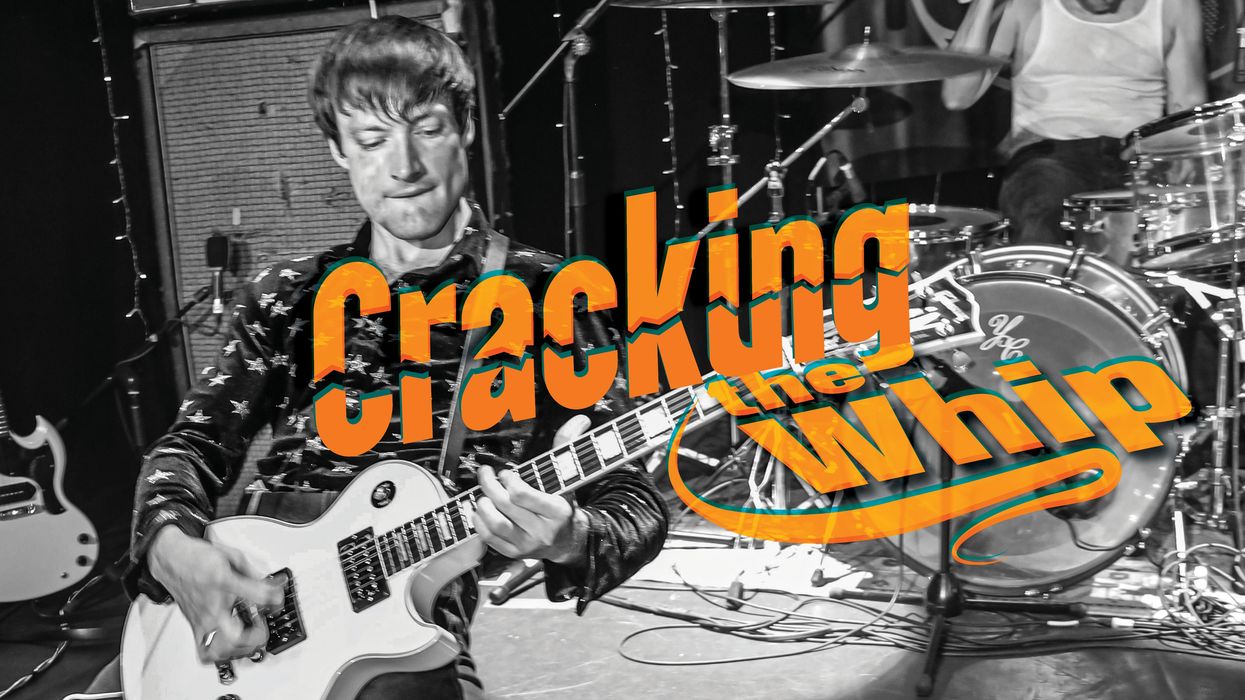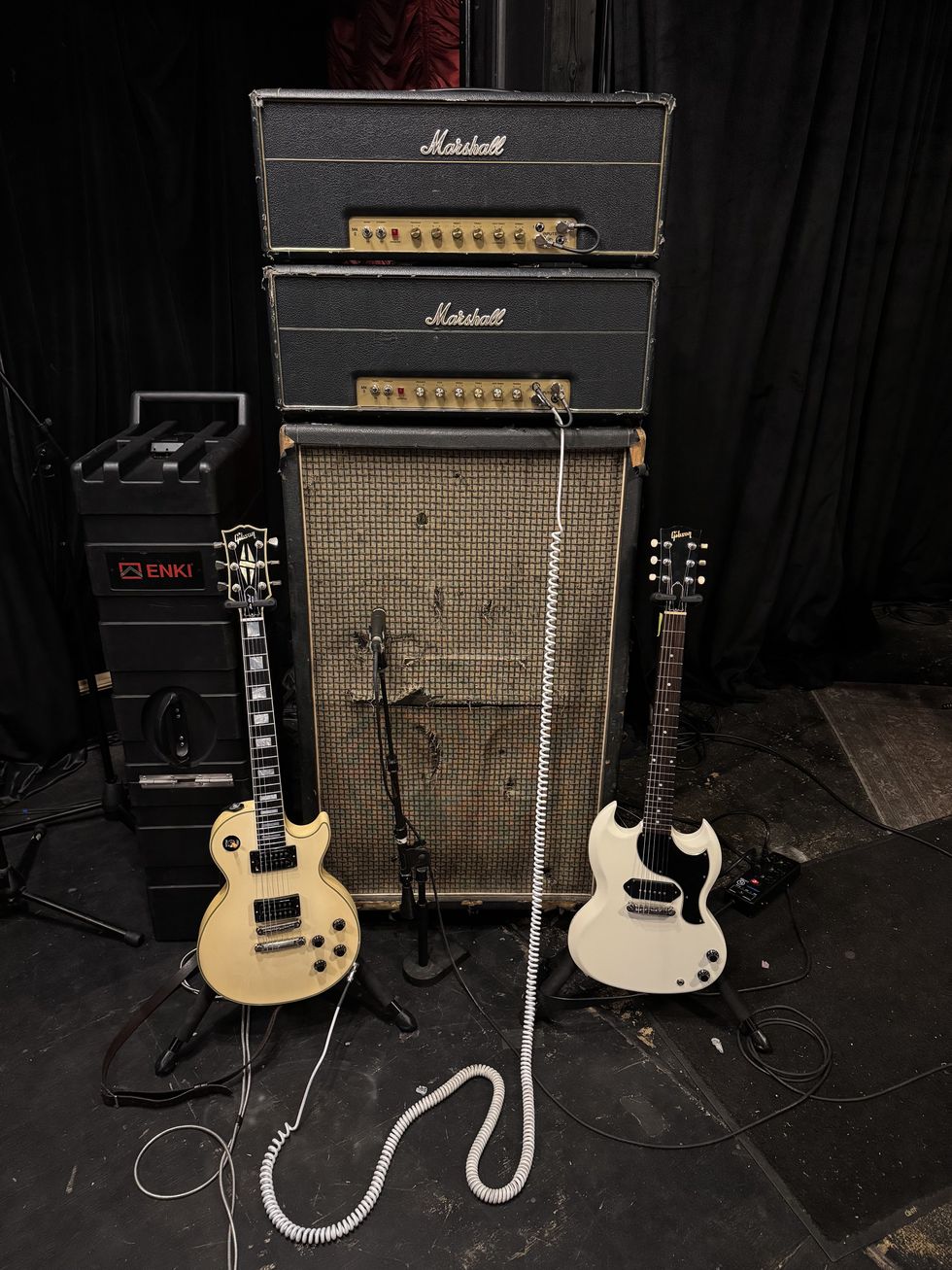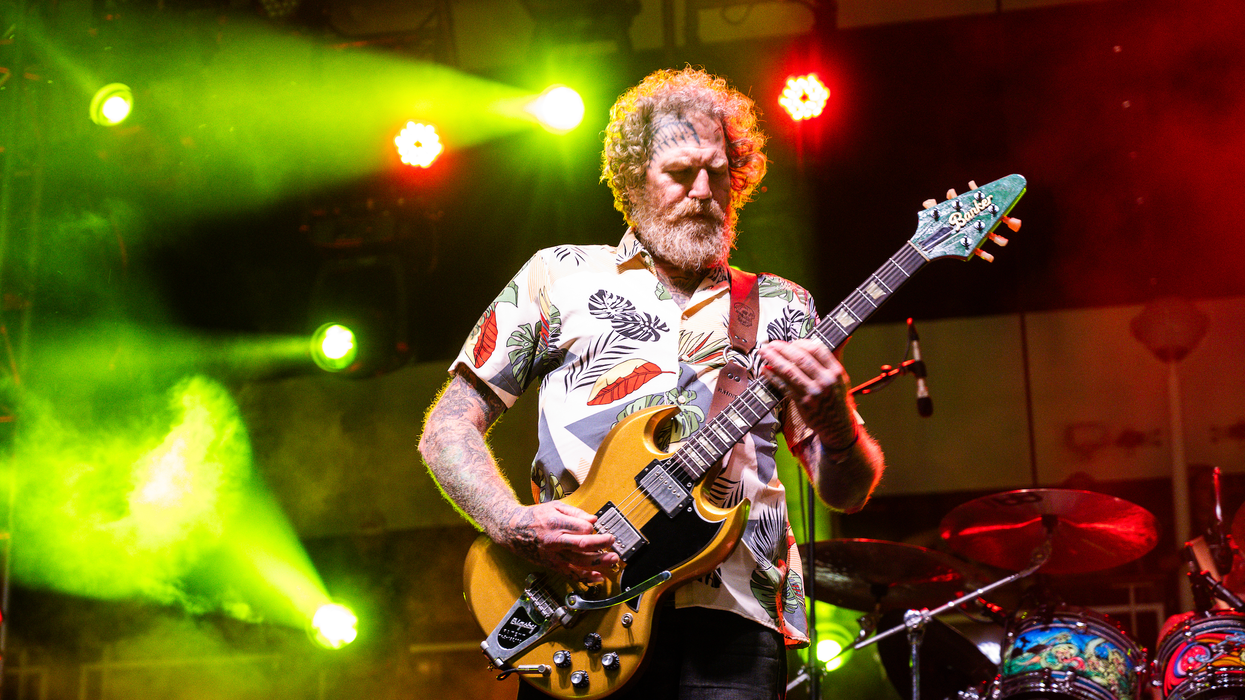North Jersey band Thank You Scientist serves up an eclectic stew of heavy alternative rock, unorthodox instrumentation, odd-metered weirdness, unabashed virtuosity, and accessible pop vocals. Amidst the madness stands wunderkind guitarist Tom Monda—Thank You Scientist's anchor, or chief culprit, depending on your perspective.
Monda is a monster who can hang with the shredders, nail intricate multi-finger double-handed hammer-ons, execute impossible lines at top speed and in unison with his band's violinist, employ an array of alternative and hybrid-picking techniques—and play his Vigier Excalibur Surfreter fretless guitar in tune and without breaking a sweat. He is equally at home playing standards in a straight-ahead jazz setting (on those gigs he uses a Gibson ES-335) or blowing through hard-bop classics like “Giant Steps."
Monda started his musical journey as an obsessive listener. As a child he spent hours rummaging through his father's record collection—Zappa, King Crimson, Yes, the Beatles, the Allman Brothers. “I started playing guitar when I was about 14," Monda told Premier Guitar. “Before that it never occurred to me that I could actually play music myself."
But Monda learned fast. His first guitar was a beat-up Epiphone Les Paul. He played in garage bands and gained his musical bearings. He discovered the shredders—Steve Vai, Yngwie Malmsteen, Jason Becker—and practiced for hours and hours every day. He took classical guitar lessons, learned how to read music, and got his first taste of formal music education. He also studied with the then up-and-coming Ron “Bumblefoot" Thal. A few years later he had a bachelor's degree in music, a stream of gigs in disparate styles, and buzz-with-a-bullet with his band, Thank You Scientist.
Premier Guitar caught up with Monda on tour and between gigs to talk about his band's unique way of writing music, their influences, their new album Maps of Non-Existent Places, odd time signatures, gear, and his early days with Bumblefoot.
You studied with Ron “Bumblefoot" Thal when you were a teenager. How did that happen?
I was really into his music. I stumbled upon his solo guitar stuff and I was floored by it because it's so weird and cool. I was studying with a local teacher who knew Ron. He told me a couple of weeks into lessons, “I'm going to send you to Ron." He gave me Ron's contact information and I got in touch with him. I started taking lessons from him and that was a big musical turning point for me. We became friends and remained friends since then—I was 16—he taught me a lot about music and he was an important teacher.
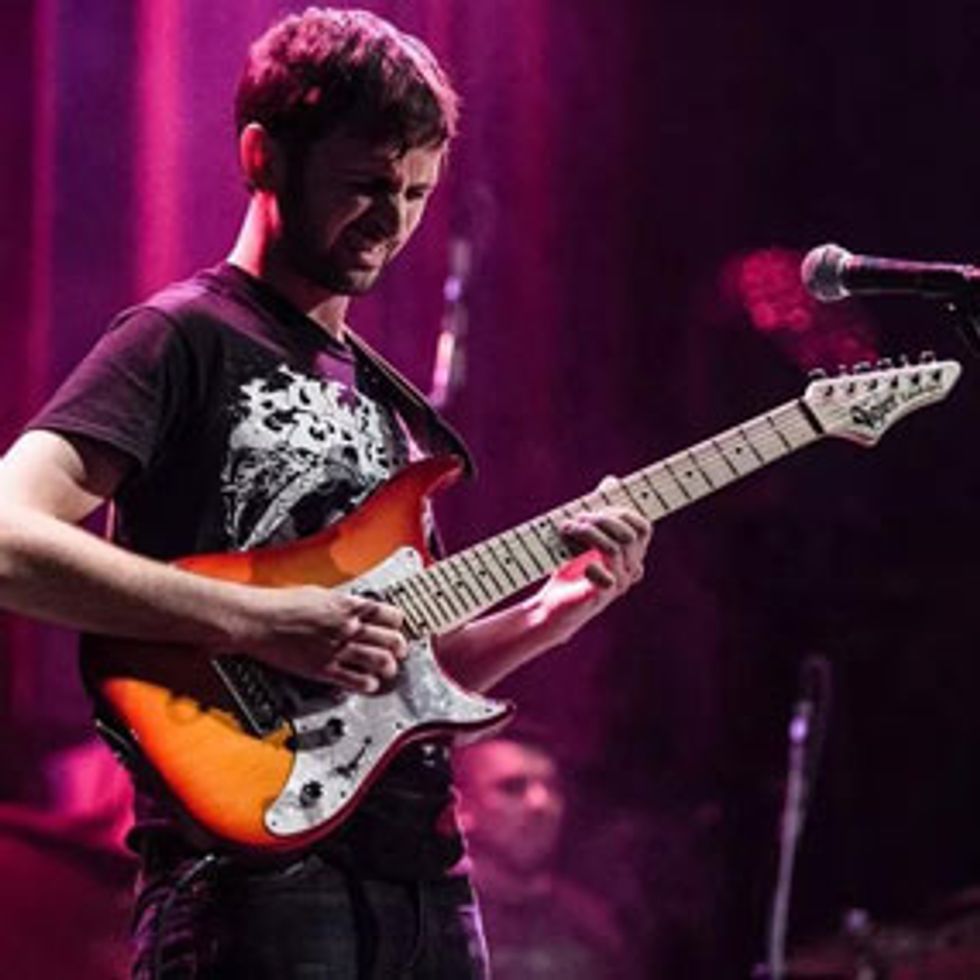
Monda's musical education included learning a little bit of every instrument—and studying guitar with fellow
New Jerseyan Ron “Bumblefoot" Thal.
Was Ron still a local teacher at that point?
He had solo records out and was doing his thing. He was producing a lot of bands but he was still a Jersey guy—a legendary Jersey guy—and he had a sizable following, especially in Europe. But this was way before he joined Guns N' Roses. He kicked my ass into shape about not just wanting to play guitar solos but learning how to write songs, learning about harmony, and all that essential stuff. I studied with him for a couple of years and then I got into jazz seriously. My degree is in music education with a jazz guitar concentration. I studied with a couple of great guitar players in college like Steve Benson and Dave Stryker. I also studied with Vic Juris for a number of years.
Did you study other instruments, too?
Yeah, and I think that was a vital part in shaping the sound of Thank You Scientist. I had to take orchestration classes and I had to learn a little bit on each instrument. Plus playing in jazz combos and doing jazz gigs on the side—writing for a [jazz] ensemble and in that context—I got used to having all those colors. I think that influenced Thank You Scientist in wanting to have all these other instruments that aren't normally in a heavy or semi-heavy rock band.
The instrumentation of the band is definitely unusual. Not so much having the horn section, but having the violin as well. Was that on purpose or did the band evolve that way?
That was on purpose. There was something about bands with violin that I really liked, like Frank Zappa's band with Jean-Luc Ponty, Mahavishnu Orchestra, and a few others. There's something cool about the timbre of electric guitar and violin that I really dig. It just opens up possibilities. We've been exploring the possibilities of the fretless guitar with violin. That's a really cool combination that's got a really unique sound to it because we can do the same kind of slurs, articulations, and cool sliding stuff together.
The Thank You Scientist crew.
Your fretless guitar—the Vigier Surfreter—doesn't have fret markers or lines on the fretboard. Is it hard to find the right notes?
It's actually not that bad! You just go for it and feel it out. You just have to keep your ears open. If you sit with it for a couple of days you'll be like, “Ah, this isn't so scary." Muscle memory and playing other fretless instruments helps as well. I play a Japanese instrument called the shamisen, too, which has no frets and it's got a really weird scale—the instrument is very long and thin—and from playing that I got used to feeling the distance between pitches.
Thank You Scientist doesn't sound like Frank Zappa, but there are a lot of Zappa-isms in your music. Was he a big influence?
I was obsessed with Zappa for a long time. He was one of those turning-point musicians. Everybody can pinpoint some musicians that shaped where they went musically. Through Zappa I got into exploring fusion and classical music. I spent a lot of time picking apart stuff on his records—all the weird musical figures and cool rhythmic stuff. He was definitely a big influence. Aesthetically I don't think we have much in common with him, but there are certainly moments in there that are a nod to Frank.
How do you approach composing for Thank You Scientist's unique instrumentation?
Our writing process is pretty painstaking and I think that is what makes it work. To generalize the way we write tunes, we get together and maybe we'll start with a guitar idea. Someone will say, “This melody will go with that." Someone else will say, “Oh, well this harmony will sound really cool." Someone else will say, “Let's use this chord instead." And it blossoms out from there. A lot of times it starts with a guitar or a vocal idea that I wrote with the singer, or just a riff or a groove, and we throw in our own ideas and pull it every which way and try different possibilities and make sure it's working.
Afterwards we always score everything and that is where we fine-tune everything. We make sure that the horns are doing the right articulations, that everyone is agreeing on the harmonies, dynamics, and all that stuff. Writing it down is a very helpful part in mapping all these acoustic instruments we have in the band. It streamlines the process, it keeps that organic sound, and keeps everybody involved in writing. We function like a regular rock band functions, but we're able to fine-tune afterwards because we write everything out.
Tom Monda's Gear
Guitars
Vigier Excalibur
Vigier Expert
Vigier Excalibur Surfreter Fretless
Uber-modified Parts-o-caster Tele
Gibson ES-335
Amps
Soldano Super Lead Overdrive (SLO-100)
Mesa/Boogie Mark V
Marshall 4x12 with two Celestion G12M Greenback and two G12T-75 speakers
Effects
Boss DD-7 Digital Delay
DigiTech Whammy 5
Line 6 M9
TC Electronic Spark Booster
Red Panda Particle Granular Delay
Booya! Amplifier Services Volume Knob in a Box
Strings and Picks
D'Addario XL115 (.011-.049)
Ernie Ball .013 set on the fretless Surfreter
Dunlop Ultex Jazz III picks
D'Andrea Pro-Plec 1.5 mm teardrop picks for jazz gigs
It's unusual for a rock band to write everything out.
Yeah, it is a little unusual and it definitely makes things easier in the studio. But with more musicians there is more margin for error, especially with the extra acoustic instruments, it's very easy to have little things that you don't realize sneak by. When you write them out you're like, “Oh okay. Maybe I should play the 9th of this chord instead," or whatever. We take care of all that stuff and put it under a microscope afterward. That is very helpful for the process.
When you compose in odd meters, are you thinking “odd meter" or is it more organic?
We don't try to force it. Basically, our thing is if it sounds cool, we do it. A lot of times it ends up being an odd meter but it's never like, “Let's write something in 15." It comes from jamming and throwing cool curve balls at each other, making it fun. Odin [Alvarez], our drummer, is a big part of that process, too. A lot of times we'll come up with a cool odd-time riff and he'll say, “Oooh, maybe it will sound cool if I play this time signature against that on the drums or if I play it straight, like a very Zeppelin-esque four underneath, just lay it down and have this odd-time stuff cycling over the top." We just play with it until we think it sounds really cool—until it's something that we would listen to and think is fun. And a lot of times it ends up being in an odd time signature, but we try to keep it organic. You don't want it to sound like, “How many time signatures can we play in?"
On a “Salesman's Guide to Non-Existence," the bridge section sounds a lot like “Frame by Frame" by King Crimson, from Discipline.
Yeah, that is one of my favorite records. It probably subconsciously seeped in. I love those broken, angular interlocking things that Adrian Belew and Robert Fripp did in '80s-era Crimson. Those Gamelan-type things. I love those. That was definitely a nod to them. No doubt.
On “Feed the Horses," just when the song is getting too weird, you go into this '80s Michael Jackson groove. Where did that come from?
We're all big Michael Jackson fans. I am a big MJ fan and big Prince fan. I remember writing that—it's got all this weirdness at the beginning—so we were like, “Let's throw a curve ball in there. Just go in a completely different direction to that first verse." There's another quote in that tune, too, we also quote “The Chicken" [composed by Pee Wee Ellis and popularized by Jaco Pastorius]. So having the opportunity to sneak in things like that was really cool.
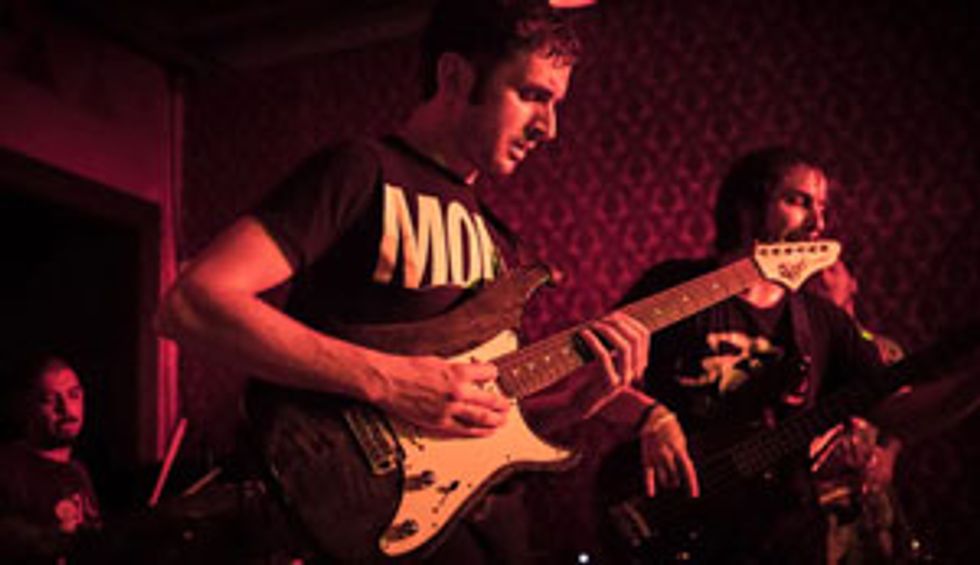
Photo by Chris Anderson
Monda's Tone Toys
Tom Monda's go-to guitars are the Vigier Excalibur, Expert, and Surfreter fretless. Vigier guitars have a dense carbon strip down the middle of the neck instead of a truss rod (the 10/90 neck system). “The neck is dead straight," Monda says. “You can leave it in the cold trailer with all the gear and it won't shift. The intonation won't get screwy. That is a major, major plus: I don't have to fiddle with the truss rod or intonation before a gig." The guitars come equipped with tremolo bridges, but Monda doesn't use them. “I usually put a block in. I do some pedal-steel-type bends where things are ringing with open strings and it's easier to have it blocked off to stay in tune."
In the studio, Monda also uses his Parts-o-caster Tele. “It has a Seymour Duncan Little '59 in the bridge and a Seth Lover in the neck position. It has a lot of random Allparts and Fender parts on it as well. It was my go-to guitar for a long, long time and I used it a lot on Maps."
Monda's amps are the 100-watt Soldano SLO-100 Super Lead Overdrive and a Mesa/Boogie Mark V for backup. He runs both heads through a Marshall 4x12, which Booya! Amplifier Services loaded with two Celestion G12M Greenbacks and two G12T-75s.
His pedalboard is simple. “It's nothing exciting," he said. “I have a DD-7 Boss Digital Delay, a DigiTech Whammy 5, a Line 6 M9, which recently took the place of a DL4, and a TC Electronic Spark Booster, which I use as a clean boost." He also has a Red Panda Particle Granular Delay. His distortion comes from the amp.
Monda strings his fretted guitars with D'Addario .011 sets, and uses Ernie Ball .010 sets on the fretless. “It's just the standard packs. I don't know what the bottom is," he says. “I used to use heavier strings but my hands were taking a beating. I'm always changing my mind about string gauges. I'll pick up a guitar with lighter strings and think, 'Wow, it's so easy to do things.' But the next day I'll pick up a guitar with .011s and think, 'The tone is so much better, I want to play these.' It's that never-ending guitar player thing."


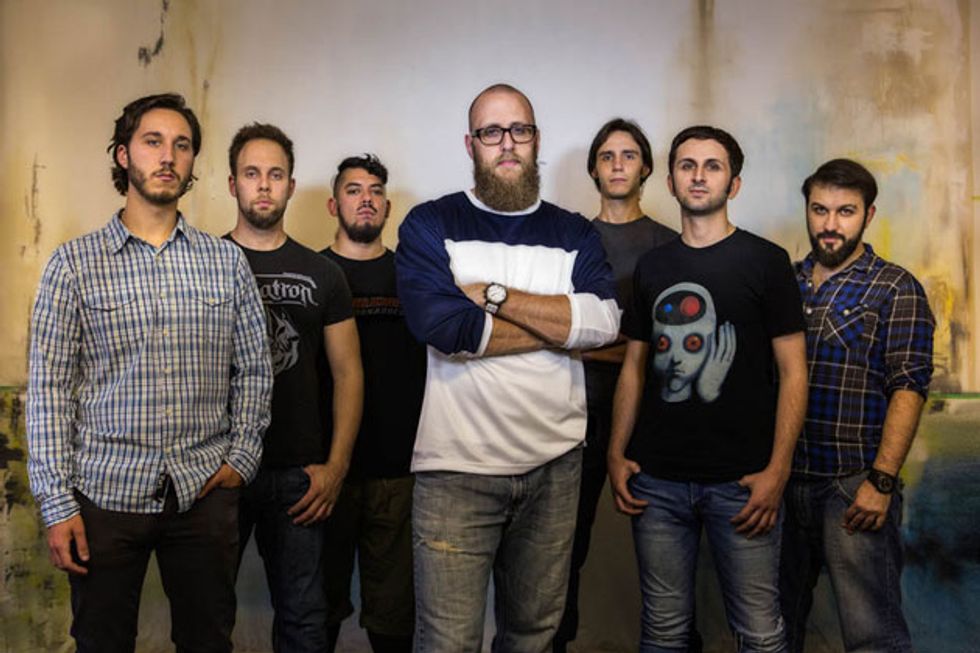
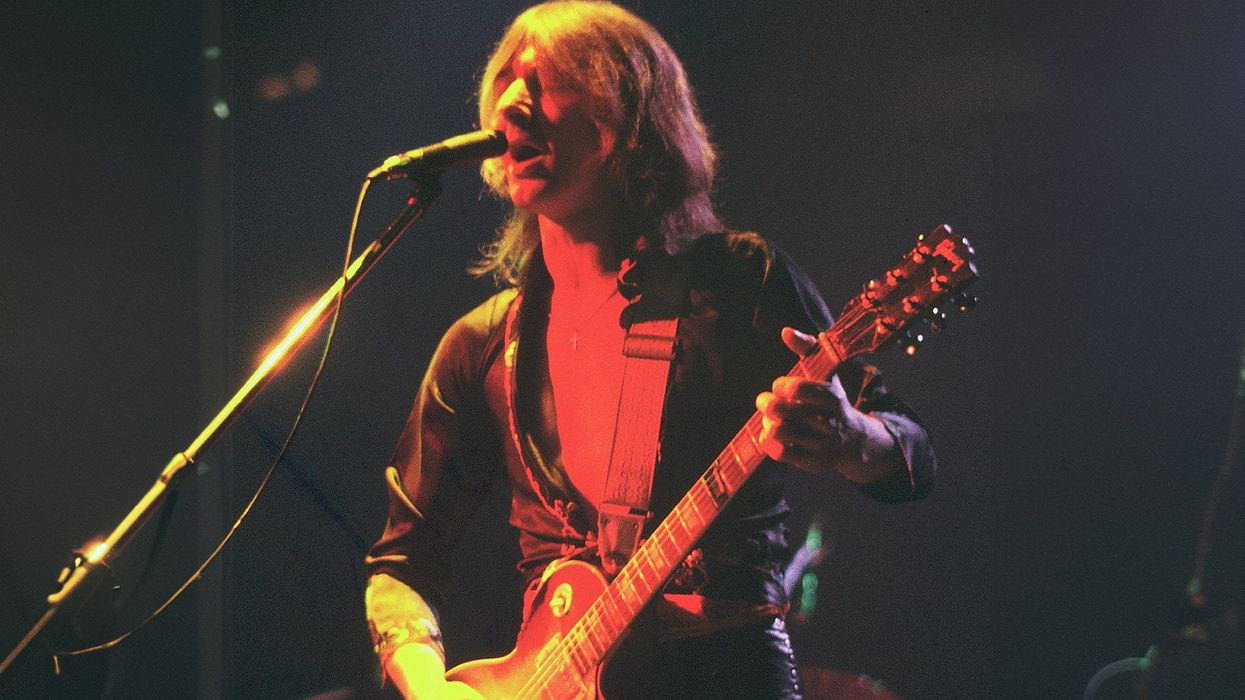
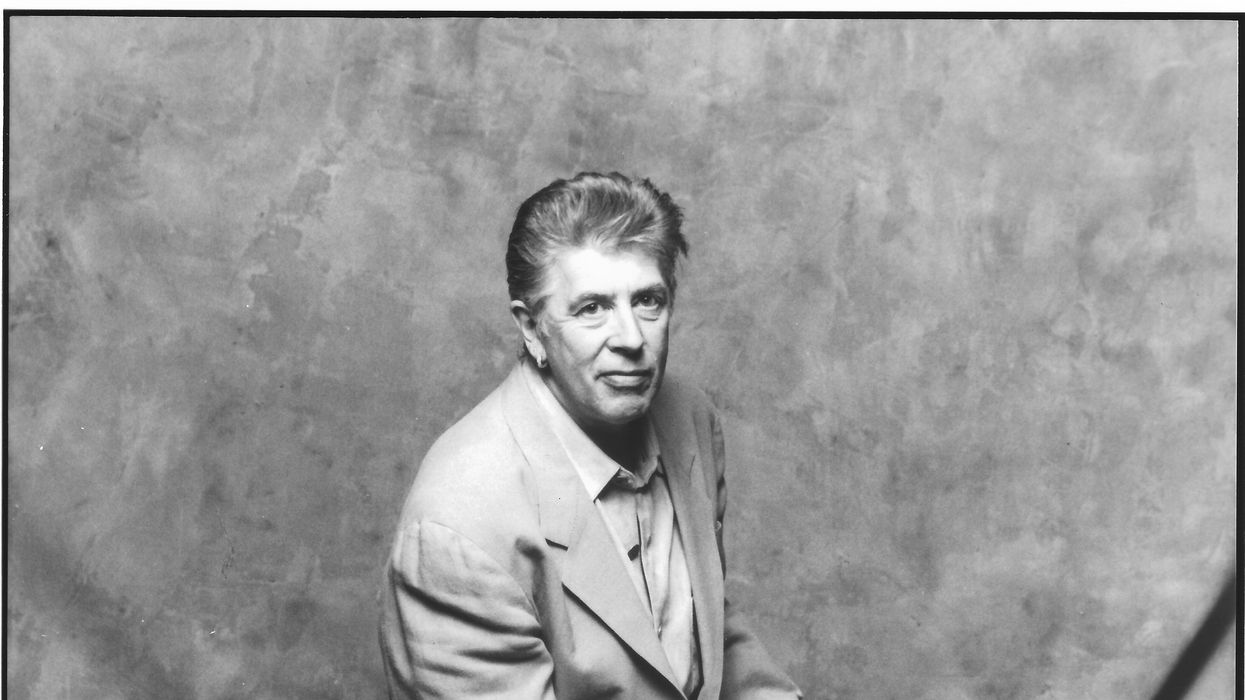
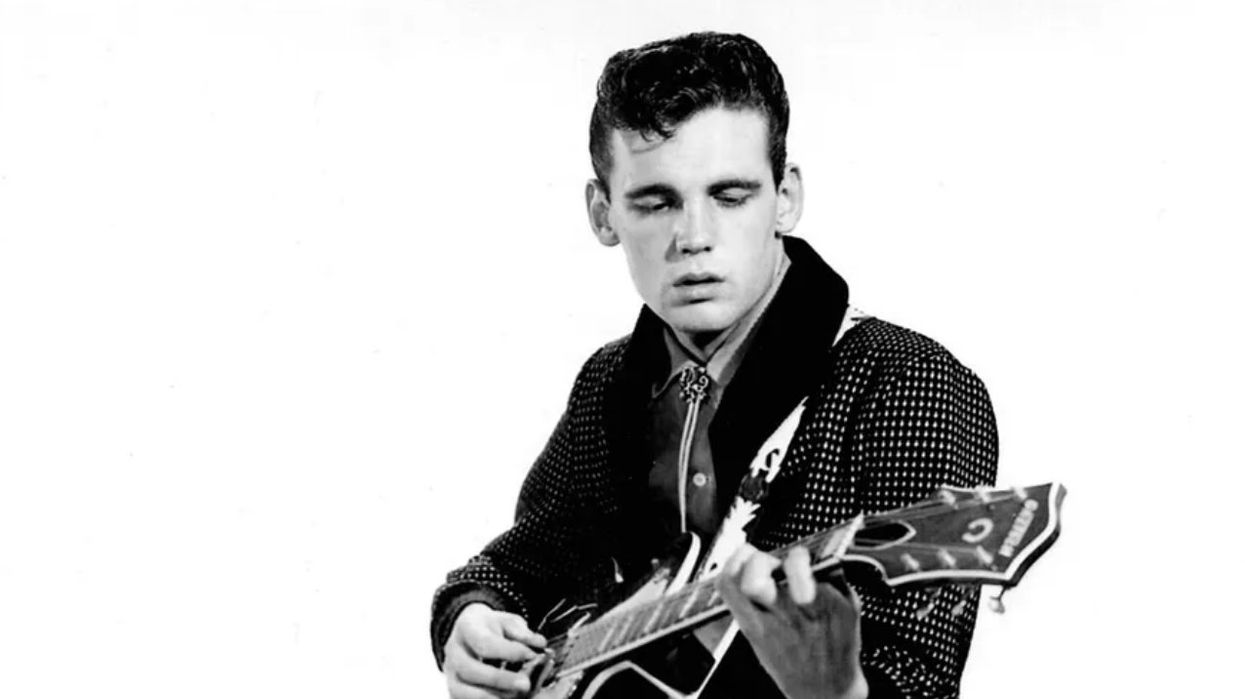
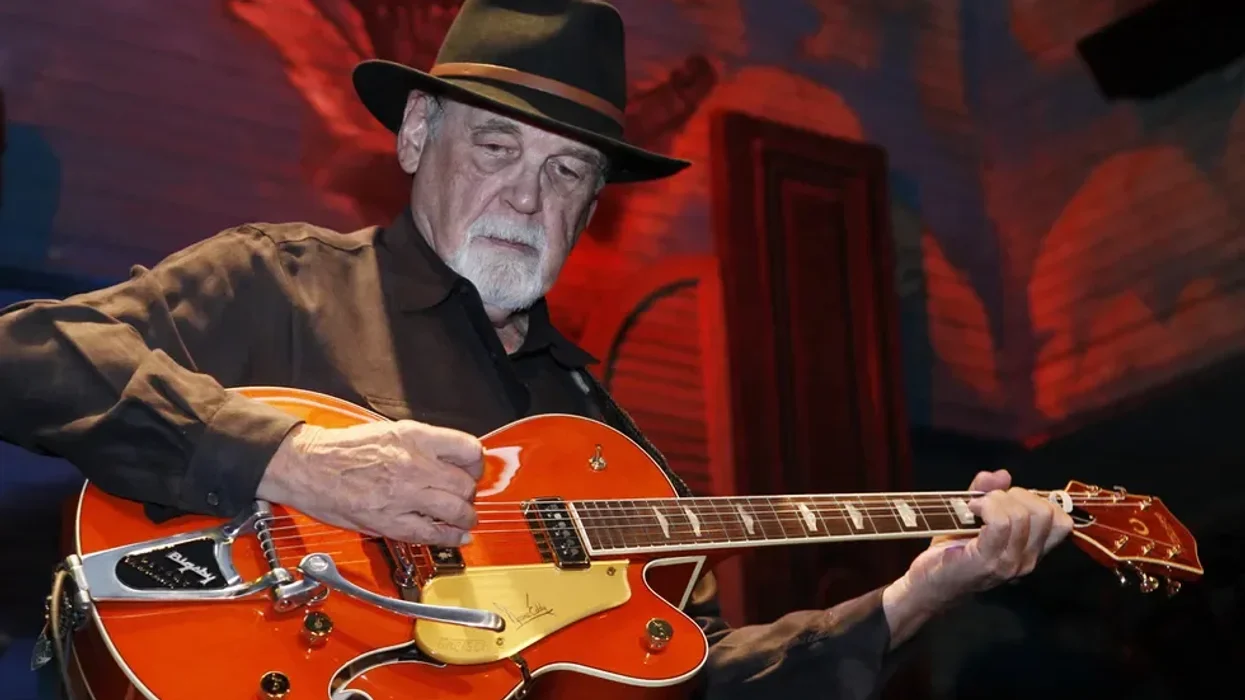
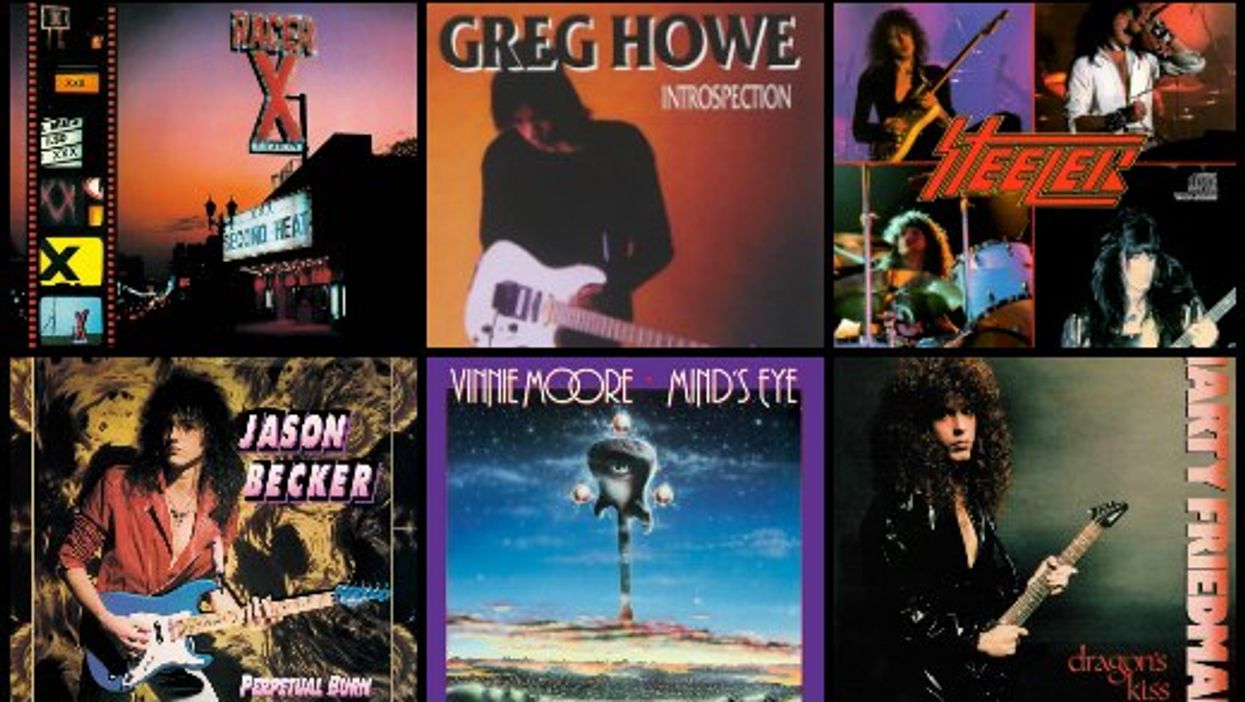
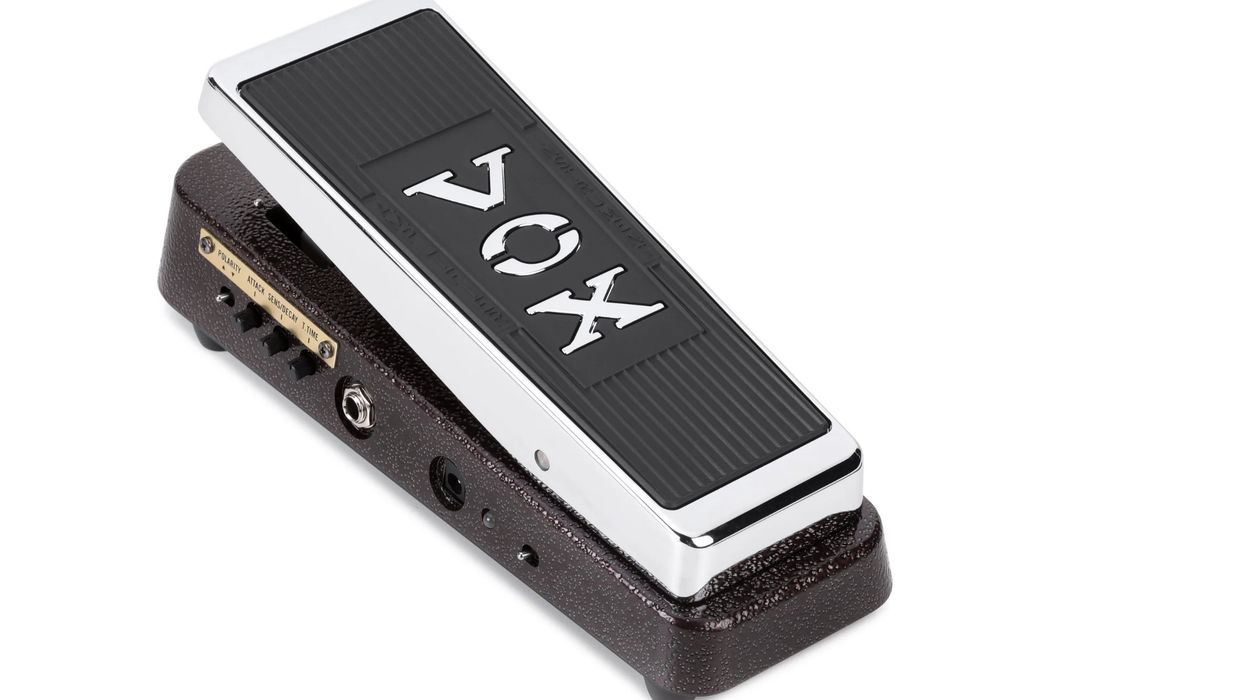

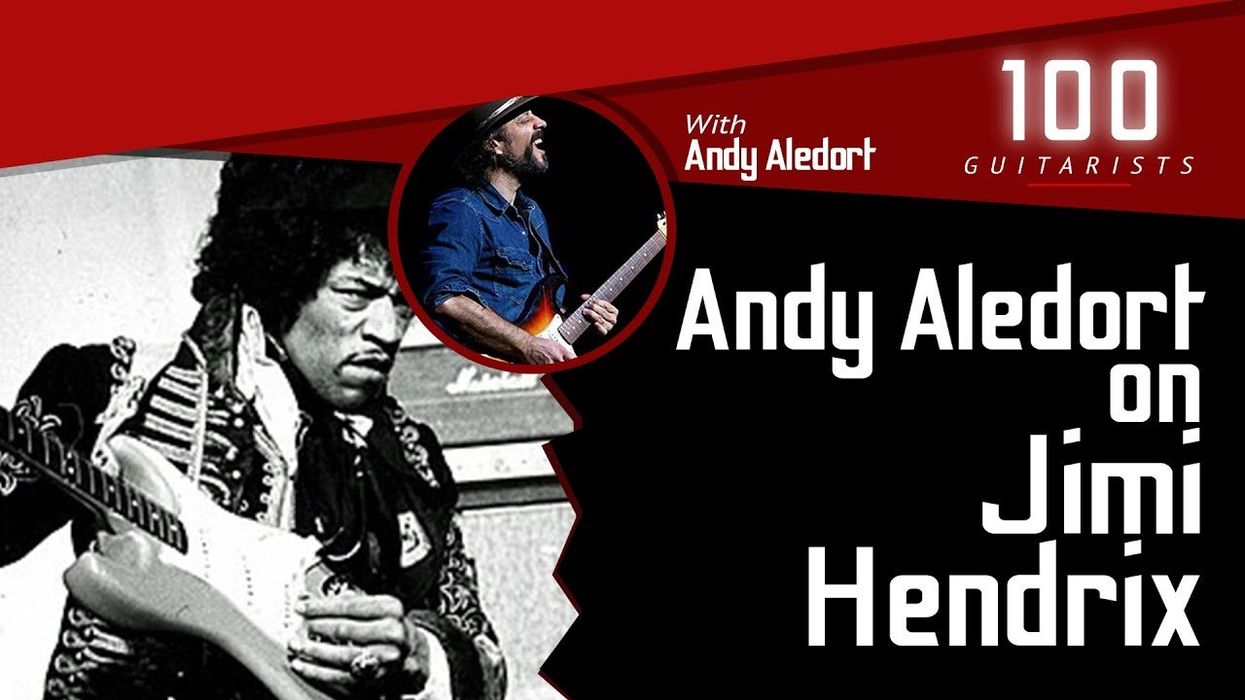
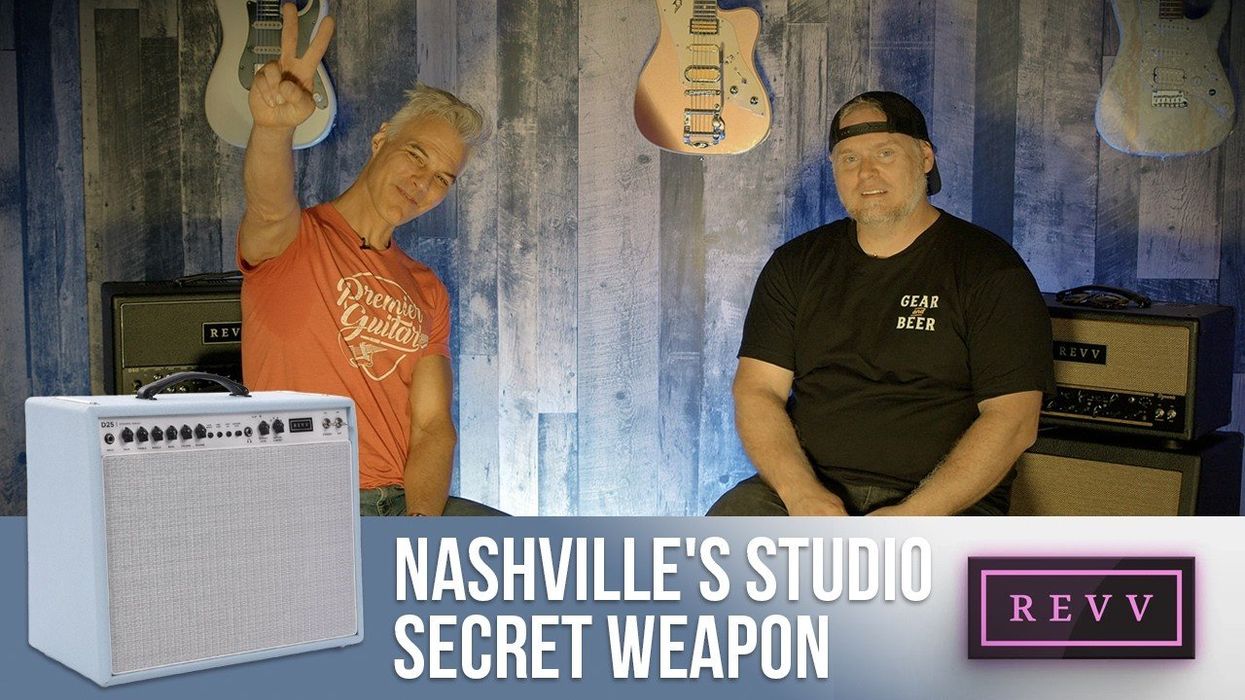
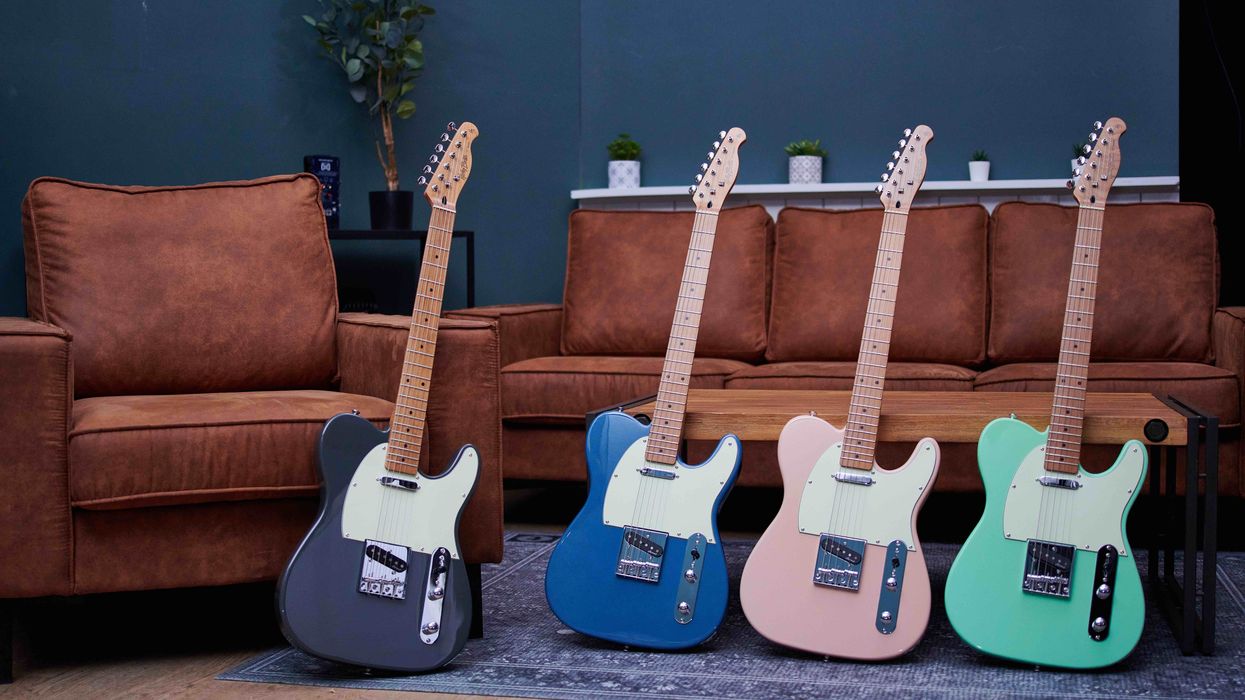
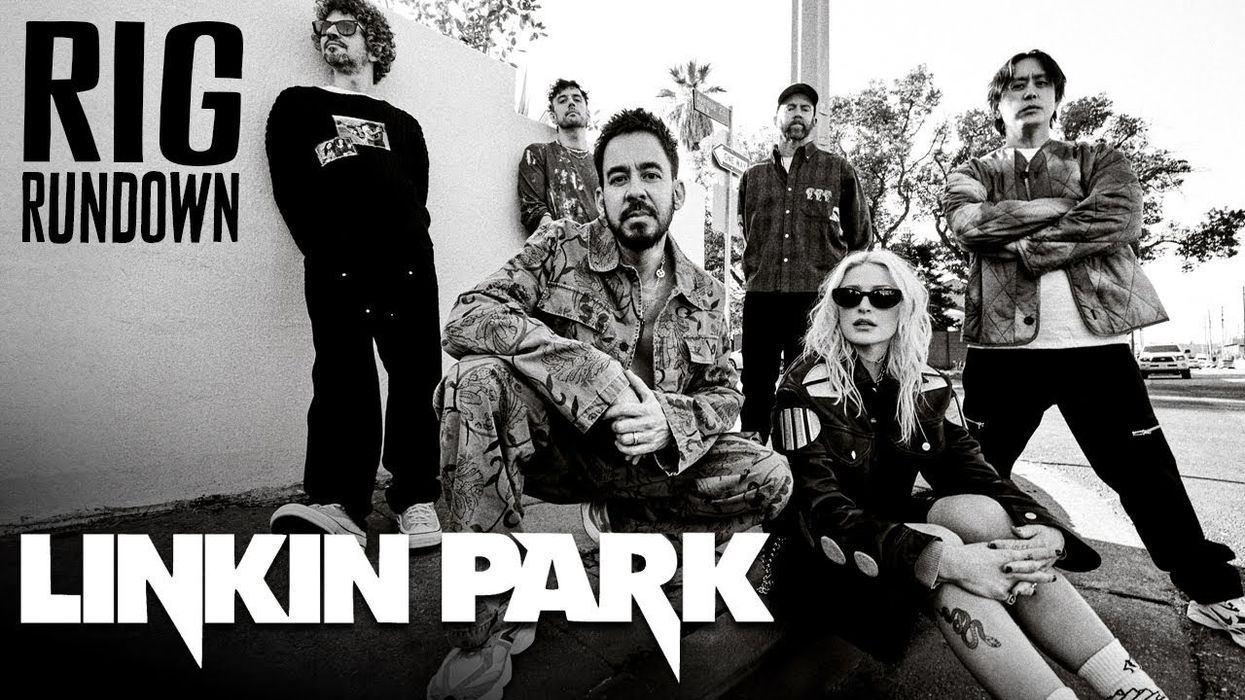
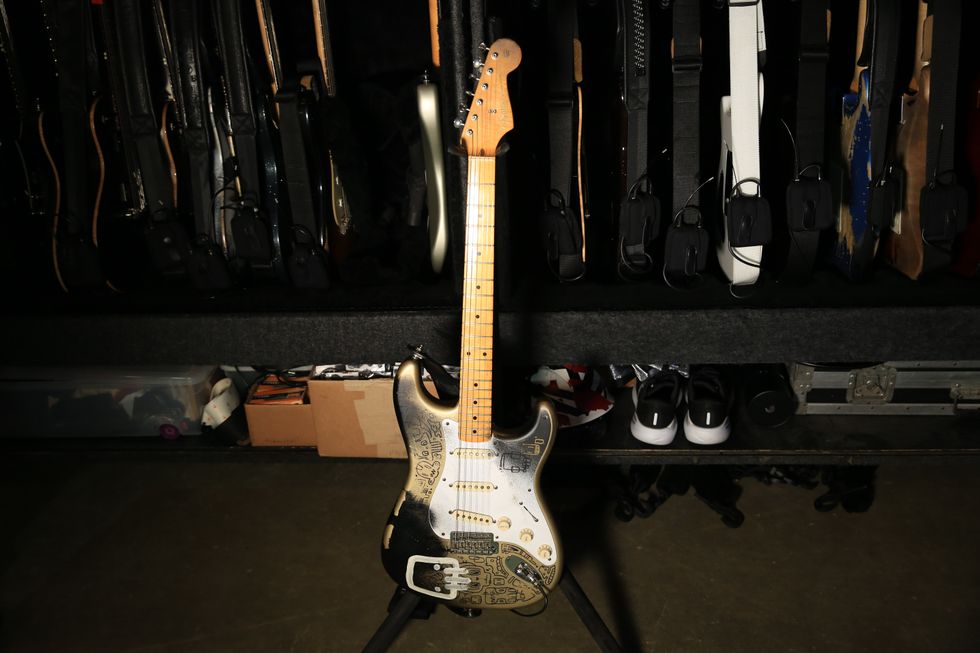
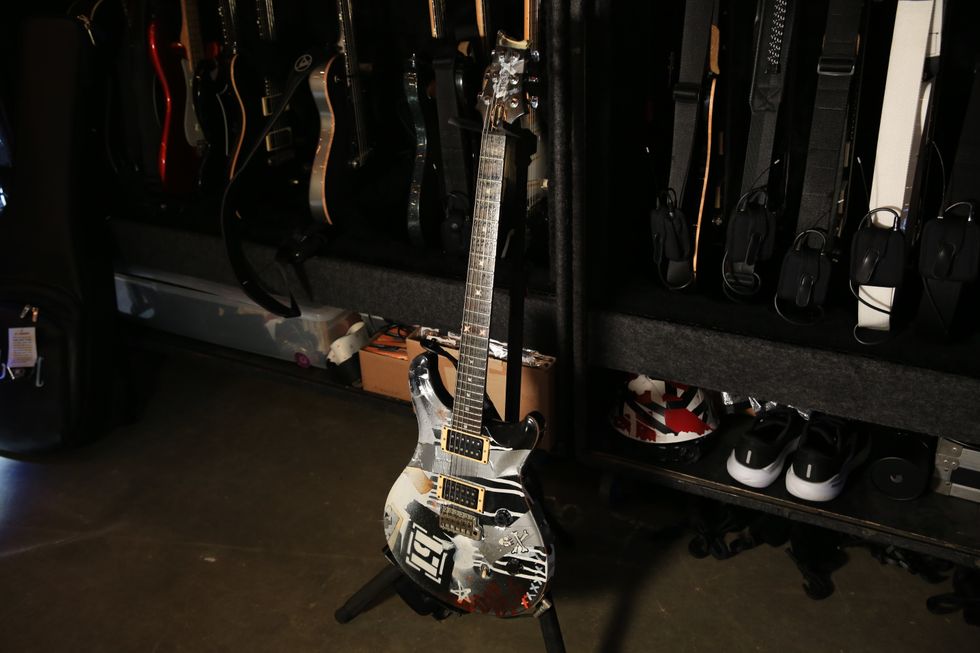
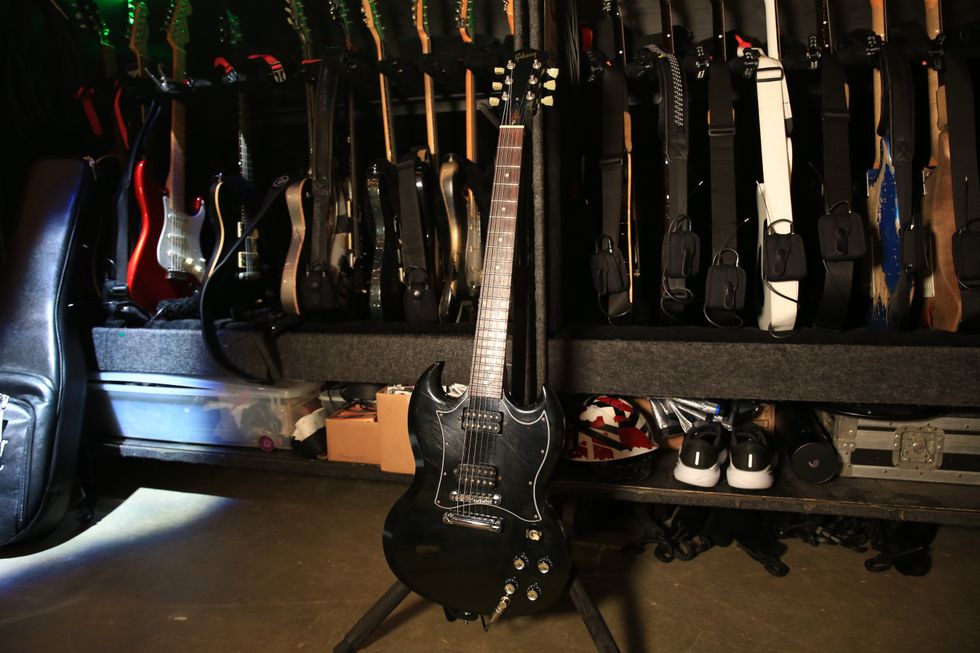
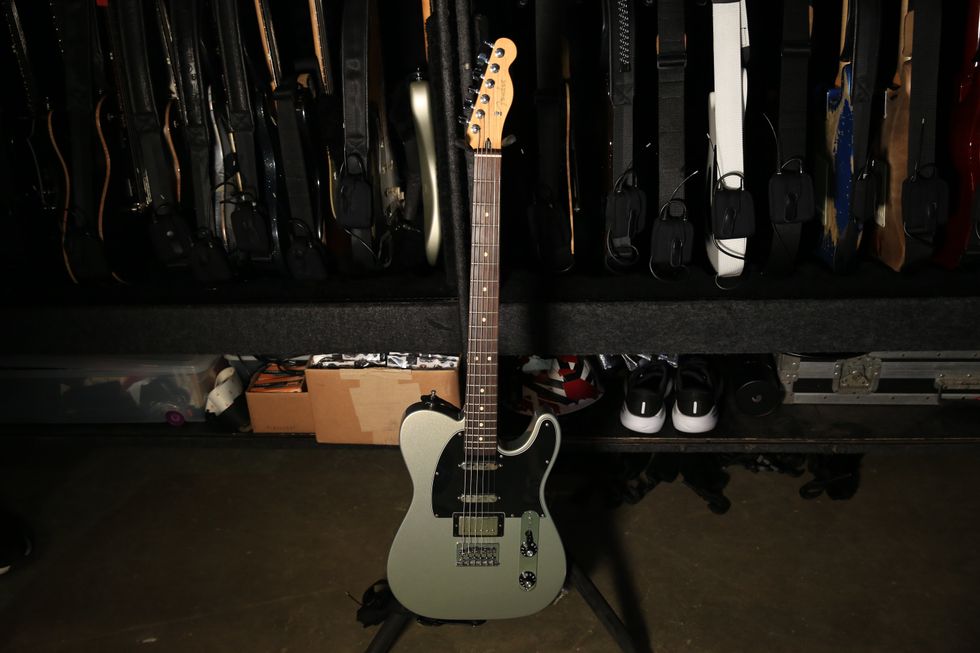
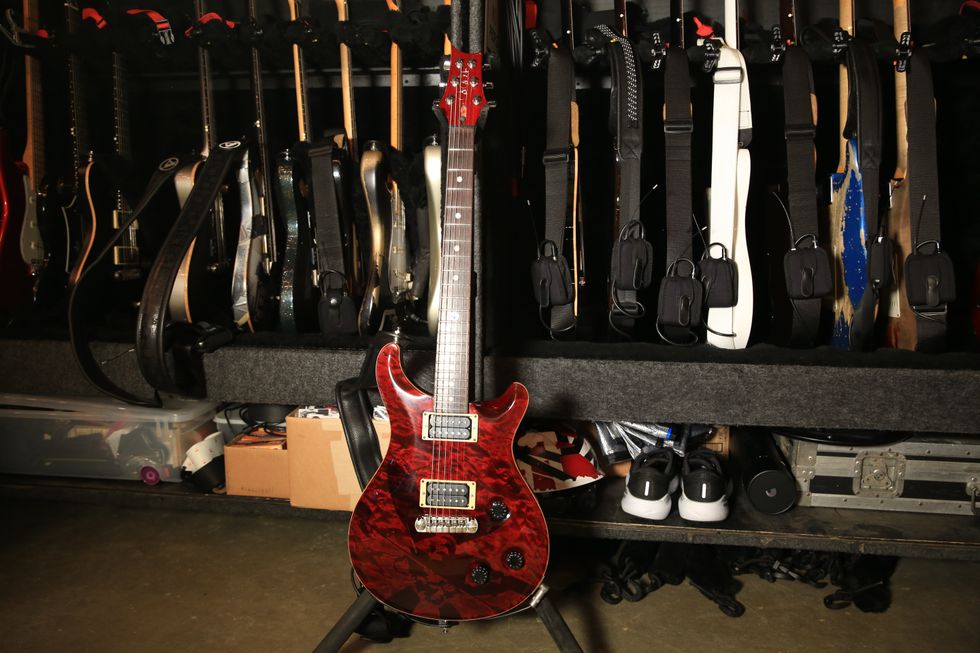
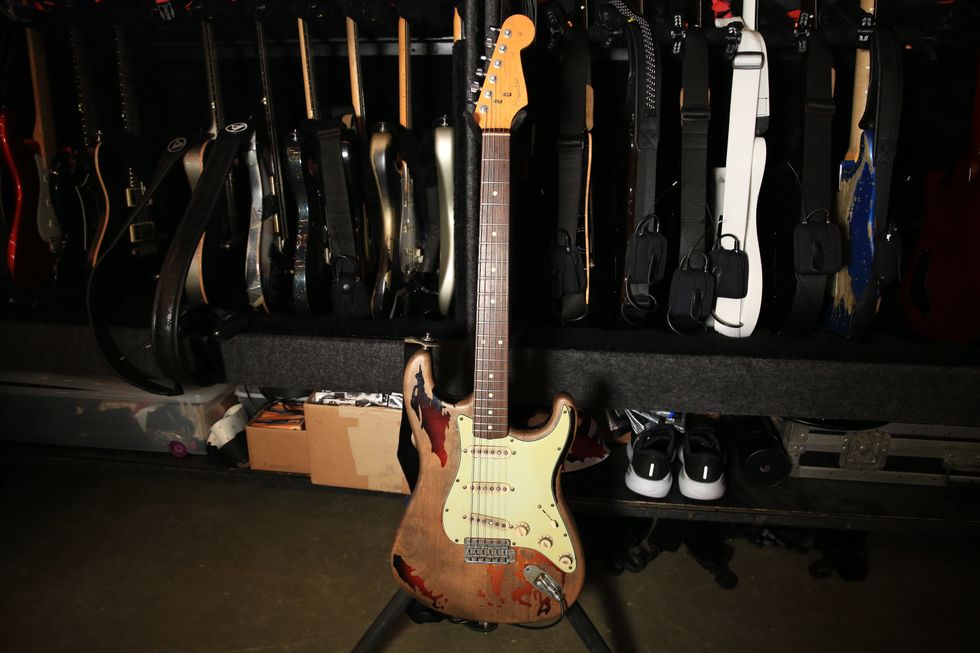
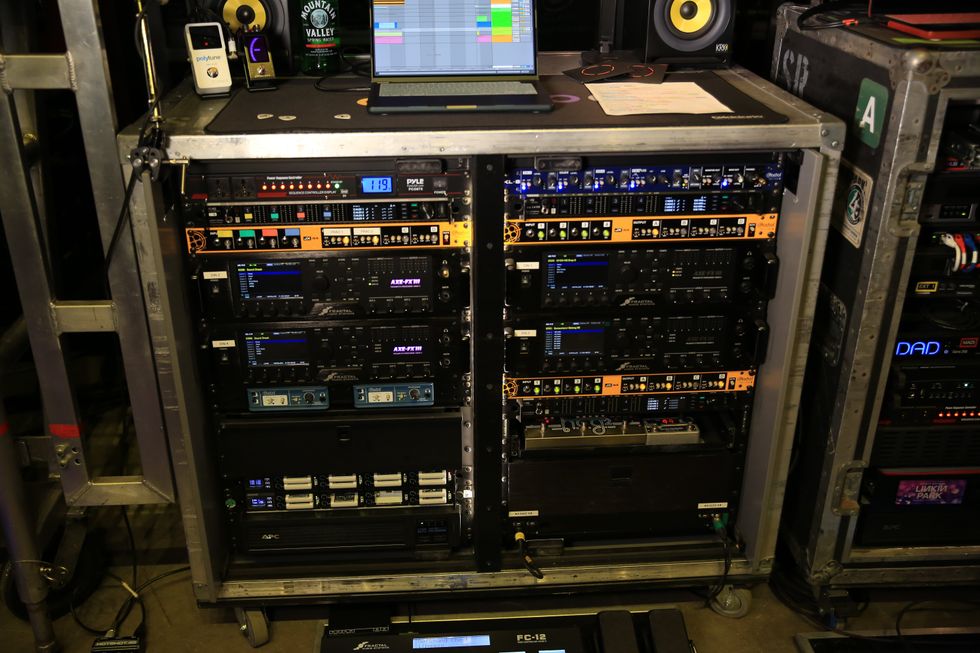
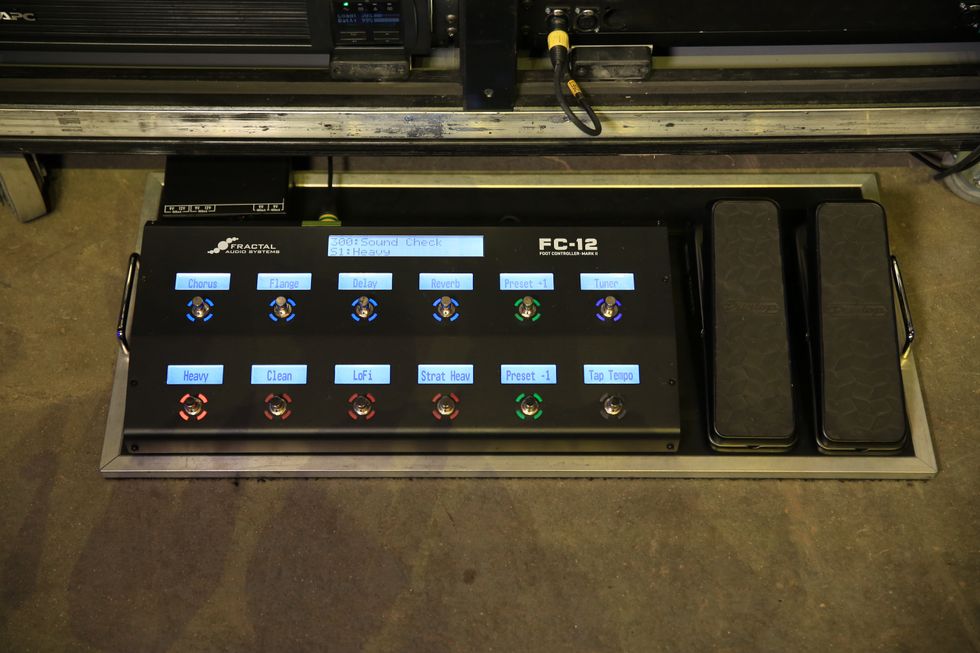
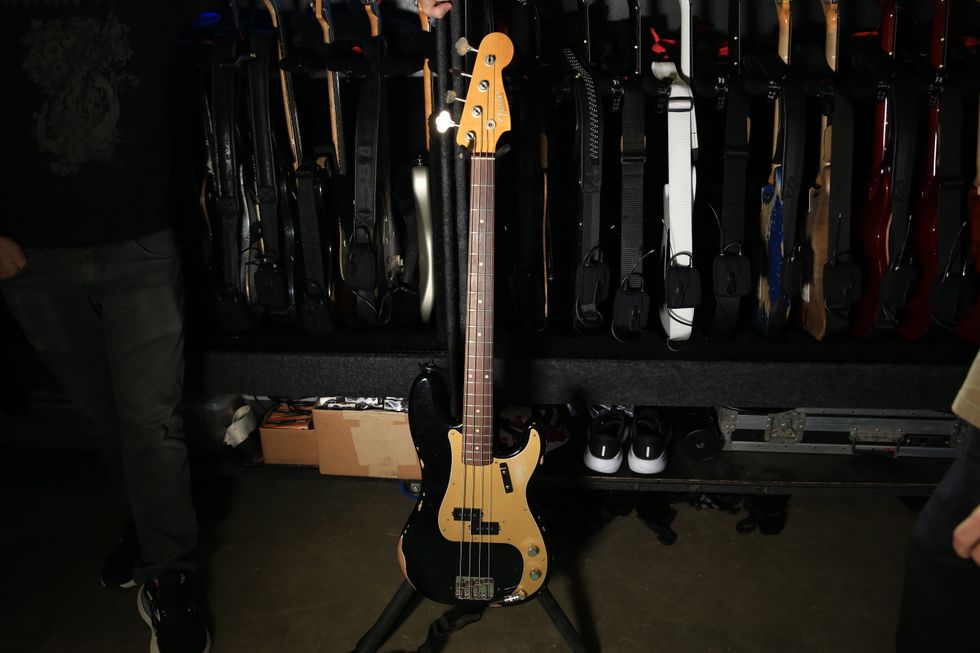
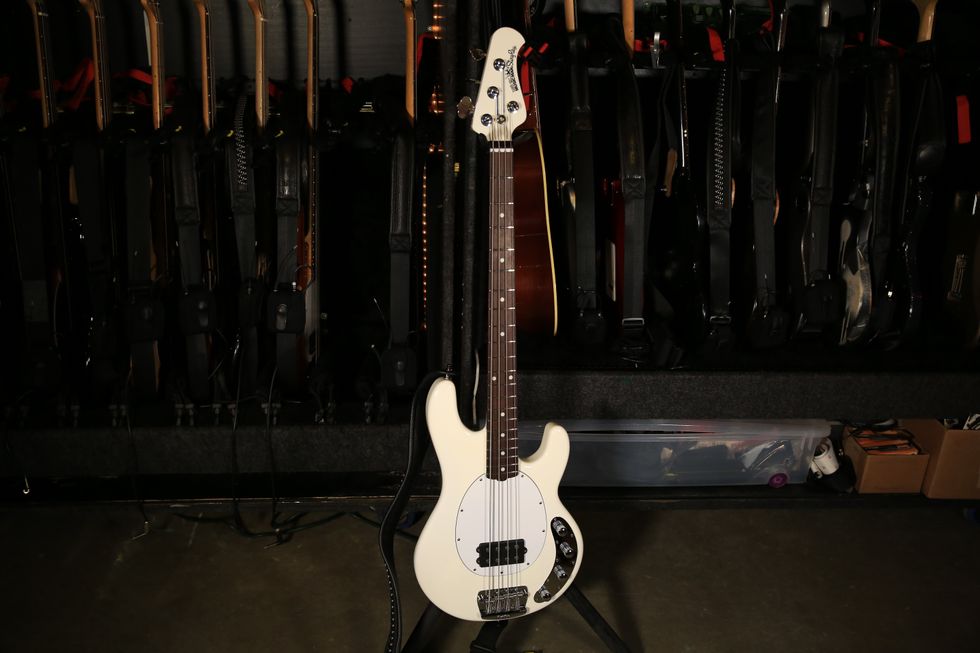
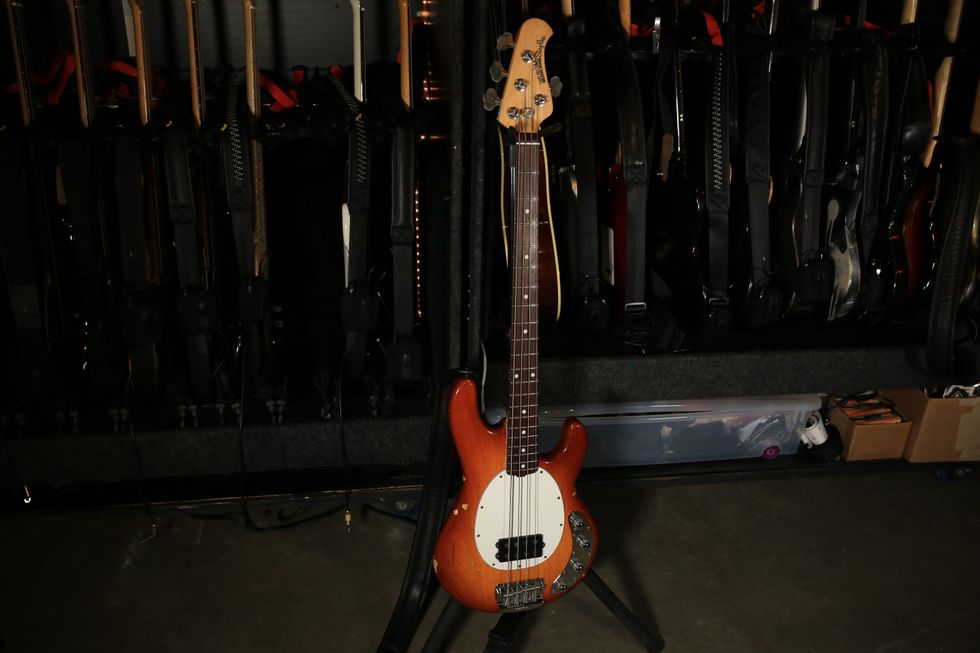
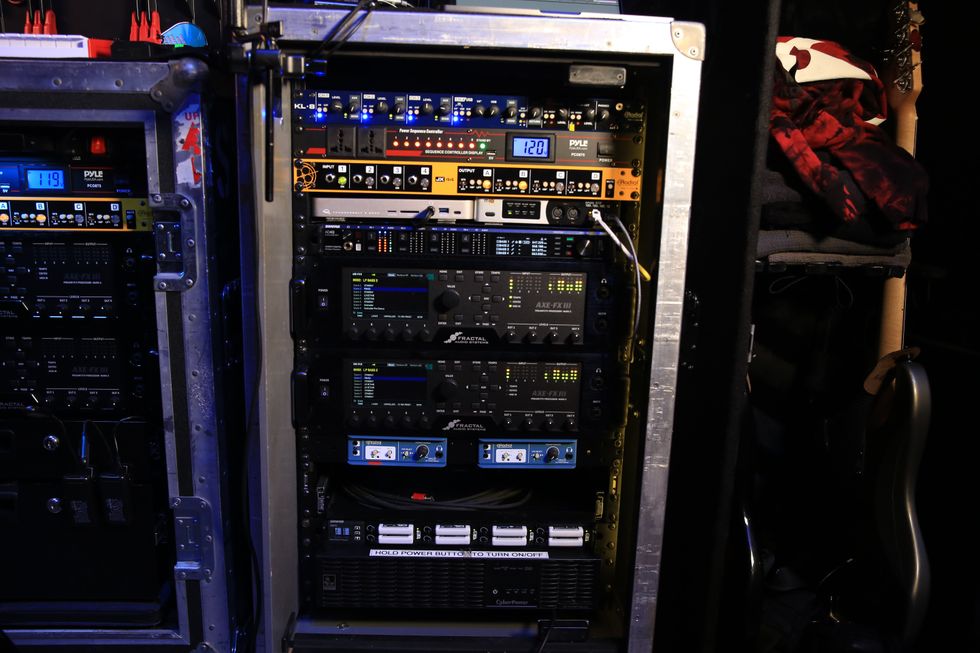

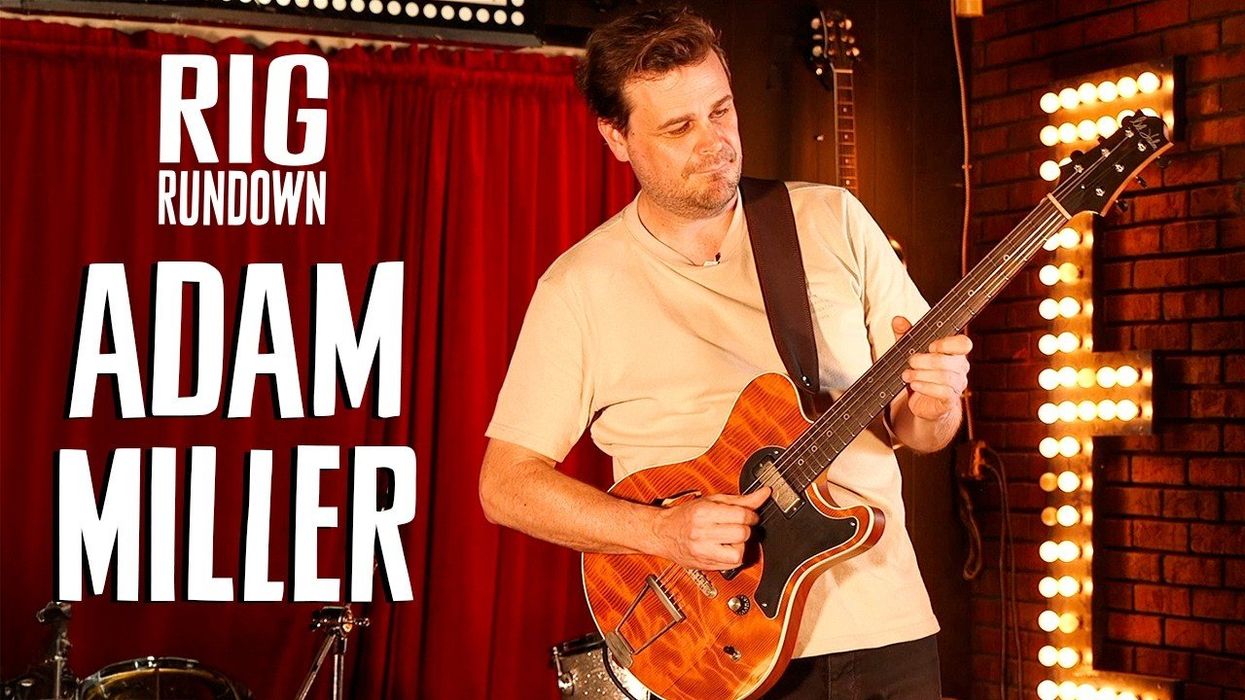
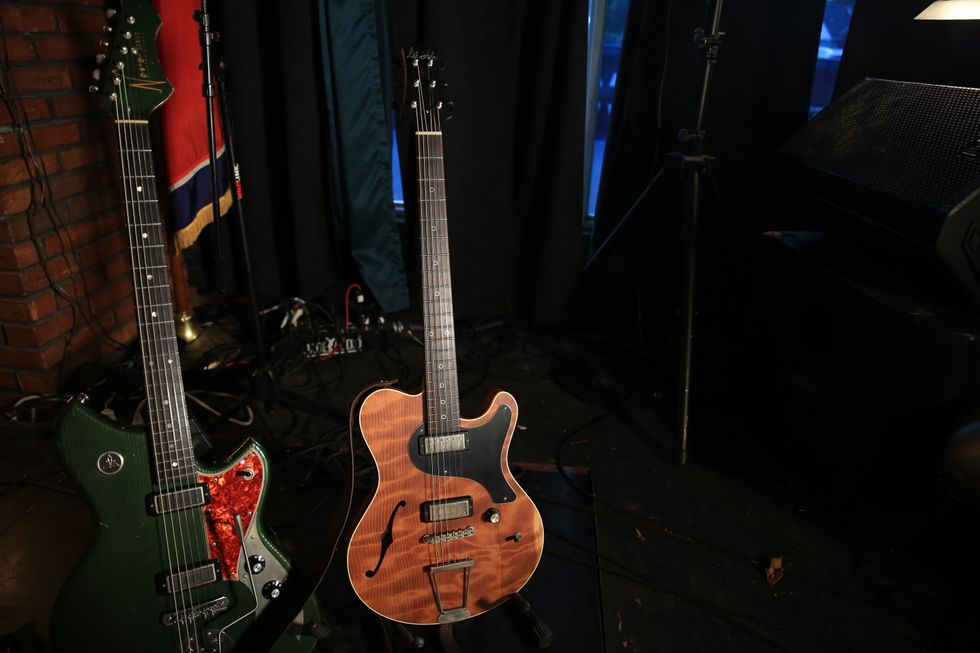
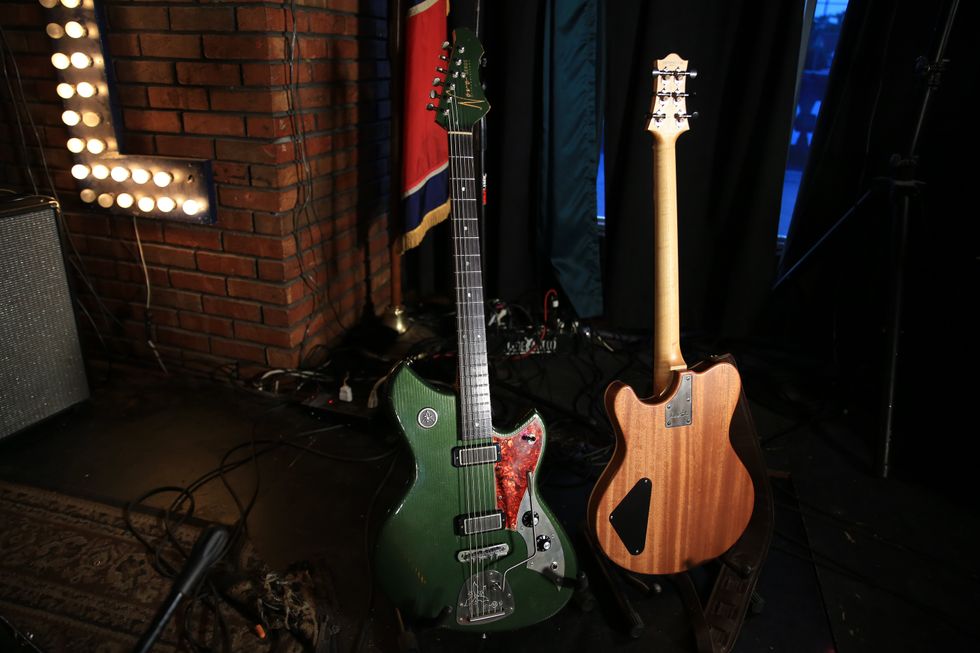
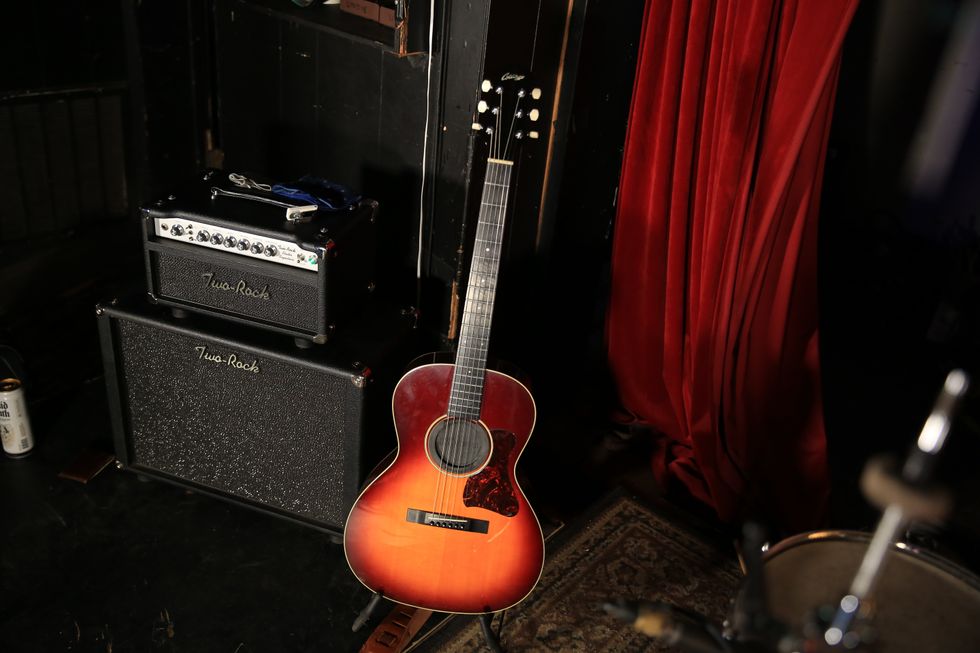
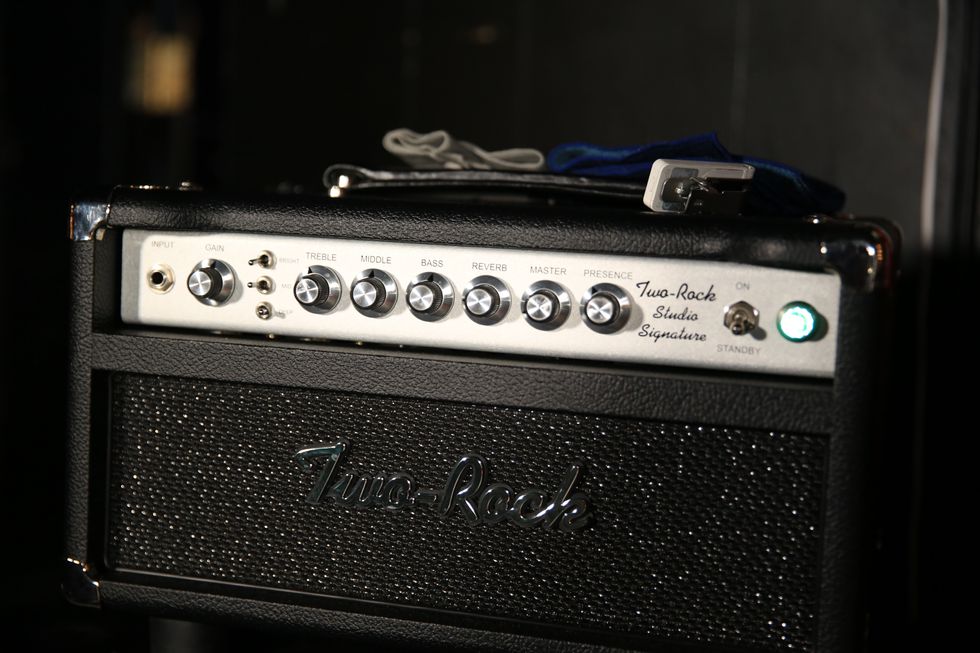
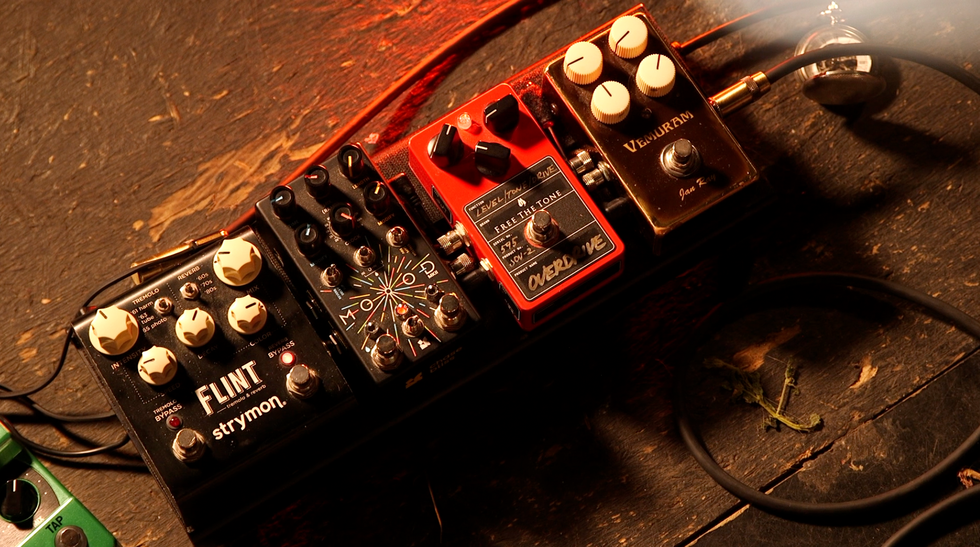
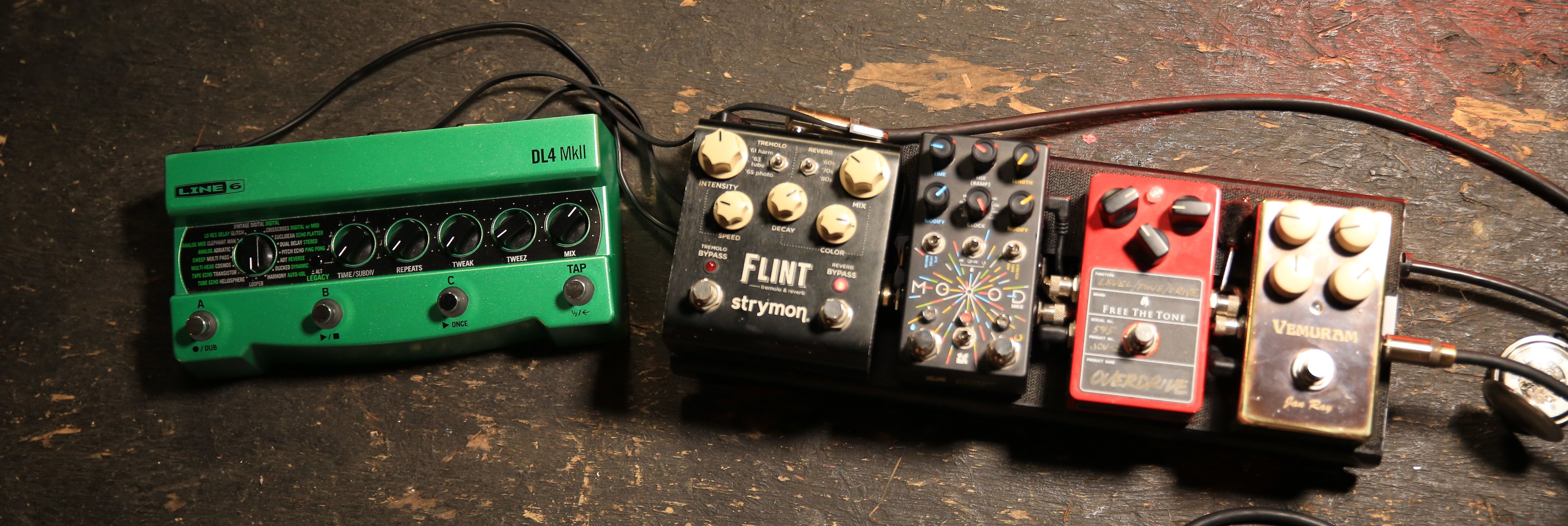 Miller’s Collings runs into a Grace Design ALiX preamp, which helps him fine-tune his EQ and level out pickups with varying output when he switches instruments. For reverb, sometimes he’ll tap the
Miller’s Collings runs into a Grace Design ALiX preamp, which helps him fine-tune his EQ and level out pickups with varying output when he switches instruments. For reverb, sometimes he’ll tap the 
